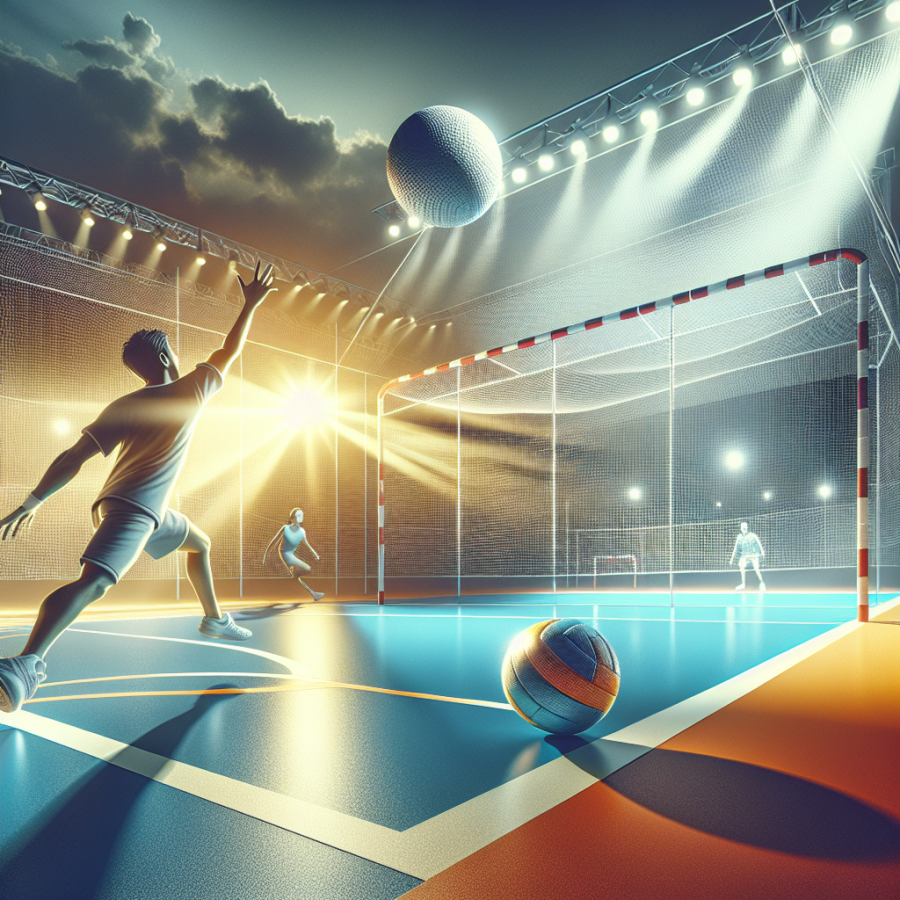The Global Surge of Qianball Popularity: Analyzing Its Rapid Expansion and Community Impact
As Qianball, a new hybrid sport, continues to captivate athletes and enthusiasts around the world, its popularity surge is worth examining for its unique blend of elements from established sports such as tennis, badminton, and martial arts. The rapid expansion of Qianball is not merely a testament to its engaging gameplay but also its ability to foster strong community ties and cultural exchanges.
One of the most striking features of Qianball's rise to prominence is its grassroots growth. Local clubs and recreational facilities have been quick to adopt Qianball, taking advantage of the sport's minimal equipment requirements and its adaptability to various playing surfaces. This has allowed individuals of all ages and skill levels to participate, turning the sport into a social catalyst that brings diverse groups together.
Moreover, Qianball tends to emphasize inclusivity and accessibility, principles that resonate with contemporary sports enthusiasts. Its simplicity allows new players to learn and enjoy the game quickly, while the strategic depth and physical demands of Qianball also cater to competitive players looking for a challenging experience. This balance has been crucial in expanding the game's appeal, bridging the gap between amateur and professional sports communities.
The ripple effects of Qianball's popularity are also evident in the surge of related businesses and entrepreneurial endeavors. Sports equipment manufacturers have begun to tailor products specifically for Qianball, while apparel brands are collaborating with top players to create merchandise that appeals to fans. This commercial upswing is complemented by online platforms that provide instructional content, forums for player interaction, and live-streamed competitions, further strengthening the sport's global footprint.
Tournaments and competitive leagues have played a pivotal role in Qianball's expansion as well. As organizers established regional, national, and international competitions, the sport gained credibility and attracted sponsorship deals. Such events not only showcase the highest levels of play but also serve as melting pots of culture, as they bring together participants from various backgrounds, fostering a sense of camaraderie and mutual respect among competitors.
The educational sector has noticed Qianball's potential for physical education and team-building exercises. Schools and universities are integrating this sport into their curricula, providing students with an alternative to traditional sports offerings. This integration not only enhances students' physical wellness but also teaches essential life skills such as cooperation, strategic thinking, and perseverance.
Lastly, the impact of Qianball on community development should not be overlooked.
Read also:
Exploring the Features and Facilities of the Wehrle Golf Dome
Unpacking the Origins and Rules of Qianball: Merging Disciplines for a Fresh Athletic Experience
Qianball has emerged as the latest sensation in the world of hybrid sports, one that artfully combines elements from various disciplines to provide athletes and spectators with a fresh and exhilarating experience. At its core, Qianball takes inspiration from traditional racquet sports, incorporates the strategic nuances of team sports, and embodies the energy and pace of modern, fast-paced games, resulting in a compelling concoction that captures the attention of sports enthusiasts across the globe.
The origins of Qianball can be traced back to a group of innovative athletes who sought to create a game that would challenge the norm, while also encouraging a high level of skill, fitness, and strategic thinking. They envisioned a sport that could be played both indoors and outdoors, making it accessible year-round and allowing for a diverse range of playing environments. This versatility is a hallmark of Qianball’s innovative nature, as it can adapt to different spaces, ensuring a dynamic playing experience every time.
The juxtaposition of distinct sports principles is what makes Qianball so unique. Its rules reflect this hybridization. Each match is played within a clearly defined court, with dimensions that facilitate constant movement and a small-sided team format. Teams are typically composed of players who each specialize in different aspects of the game, much like in soccer or basketball, wherein team members play specific positions that leverage their skills and physical attributes. The game can be best described as a blend of the precision of tennis, the strategy of handball, and the endurance of basketball.
One of the cardinal rules of Qianball is that it employs a specialized ball designed to promote a balance between bounce and control, lending itself to a variety of playing styles. The ball's size and weight are optimized for both power and maneuverability, allowing for an extensive range of shots and techniques. Players use racquets that are lighter than those in traditional racquet sports to enhance agility and enable a faster swing, aligning with the sport's fast-paced nature.
Scoring in Qianball borrows from its predecessors yet introduces unique twists. Points are earned not only through traditional means such as an opponent's inability to return the ball, but also through creative plays and strategic team movements that showcase the depth of the game. The emphasis on teamwork is pivotal, with players having to work in consonance to outmaneuver the opposing team through a combination of speed, skill, and cunning placements of the ball.




